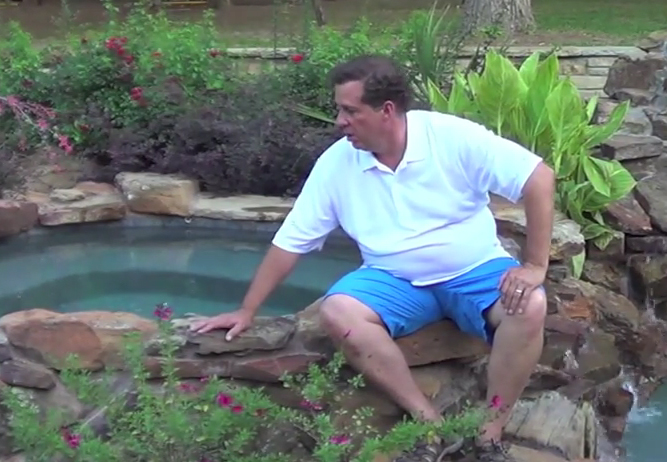organic
There are few things prettier than the classic sky blue that results from the combination of white plaster and clear water. In recent times, however, amazing and even startling colors and color combinations are appearing within swimming pools and other watershapes courtesy of either integrally colored plaster, white plaster paste coupled with colored aggregate or colored paste with a colored aggregate. Various textures are also available courtesy of these finishes, with surfaces ranging from
I've been working as a watershape designer long enough to have seen big trends emerge and really take hold. It seemed for a while, for example, that vanishing edges came up at some point in just about every initial client conversation. More recently, I've found myself discussing lots of geometric pools - rectangles and various other squared-off perimeters - and that's great, because it gives us plentiful ways to
It's one of the most famous buildings in the world, but few people know that Frank Lloyd Wright designed Fallingwater in a matter of hours. In 1935, when Wright first received the commission to design and build a vacation home for Pittsburgh retail tycoon Edgar J. Kaufman and his family in Mill Run, Pa., he didn't get to the project right away. After several months of preliminary discussions and delays, Kaufman decided to force the issue, telephoning the architect and saying that he was going to visit Wright's studio to see what had been done. It was at that point Wright decided he'd better design the house. He had a weekend. The construction process was no more direct, but it took longer. Work began in 1936 and was completed by 1939 in a series of costly fits and starts. The project was originally set to cost in the neighborhood of $40,000, but the final tally rose to nearly ten times that amount - not inconsiderable in post-Depression America. The result of the dramatic (and, at times, traumatic) process of design and construction is nothing less than one of the greatest achievements in American architecture, a work so compelling that it never stops
It's one of the most famous buildings in the world, but few people know that Frank Lloyd Wright designed Fallingwater in a matter of hours. In 1935, when Wright first received the commission to design and build a vacation home for Pittsburgh retail tycoon Edgar J. Kaufman and his family in Mill Run, Pa., he didn't get to the project right away. After several months of preliminary discussions and delays, Kaufman decided to force the issue, telephoning the architect and saying that he was going to visit Wright's studio to see what had been done. It was at that point Wright decided he'd better design the house. He had a weekend. The construction process was no more direct, but it took longer. Work began in 1936 and was completed by 1939 in a series of costly fits and starts. The project was originally set to cost in the neighborhood of $40,000, but the final tally rose to nearly ten times that amount - not inconsiderable in post-Depression America. The result of the dramatic (and, at times, traumatic) process of design and construction is nothing less than one of the greatest achievements in American architecture, a work so compelling that it never stops
Helena Arahuete joined the staff of John Lautner's architectural firm in the early 1960s, at a point where he was turning out some of his most spectacular work. Indeed, Lautner can indisputably be said to have designed some of the most beautiful and unusual homes built in the second half of the 20th Century. An apprentice of Frank Lloyd Wright's who studied with the master at Taliesen, Lautner was an exponent of the philosophy and discipline known as "Organic Architecture," an approach Arahuete, now an eminent architect in her own right, has continued to use and refine while running the firm that still bears Lautner's name. She is now one of the world's leading practitioners of Wright's and Lautner's approach to creating unique structures that are intricately and intimately tied to their surroundings. She is also so firm a proponent of the integration of watershapes into those architectural forms that in April 2000, she carried her message to the first Genesis 3 Level II Design School, held in Islamorada, Fla. - and welcomed an opportunity to present some of Lautner's work here by way of defining the place watershapers have at the design table with
















